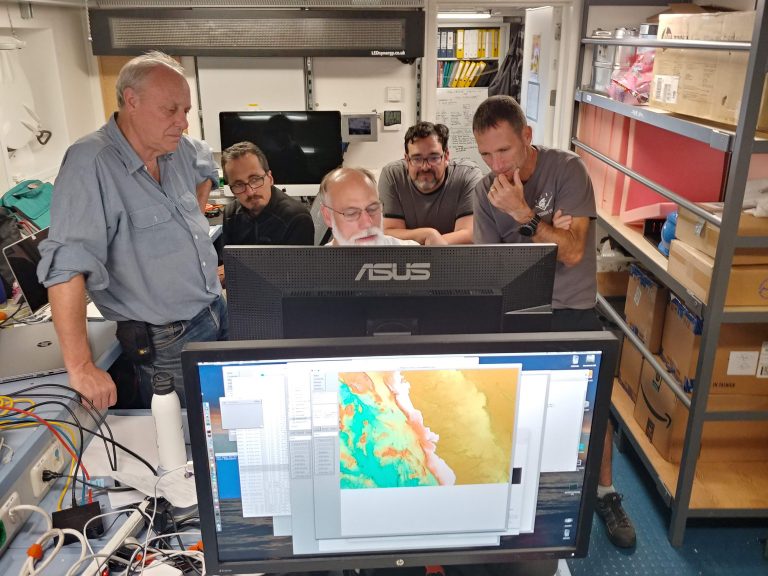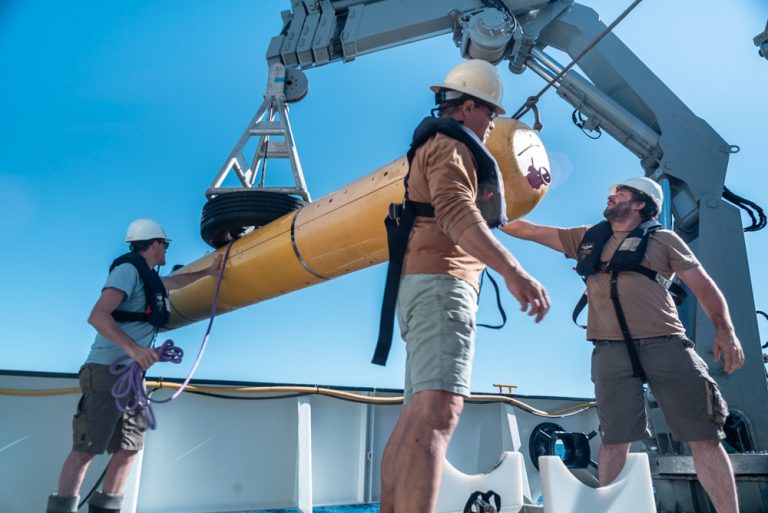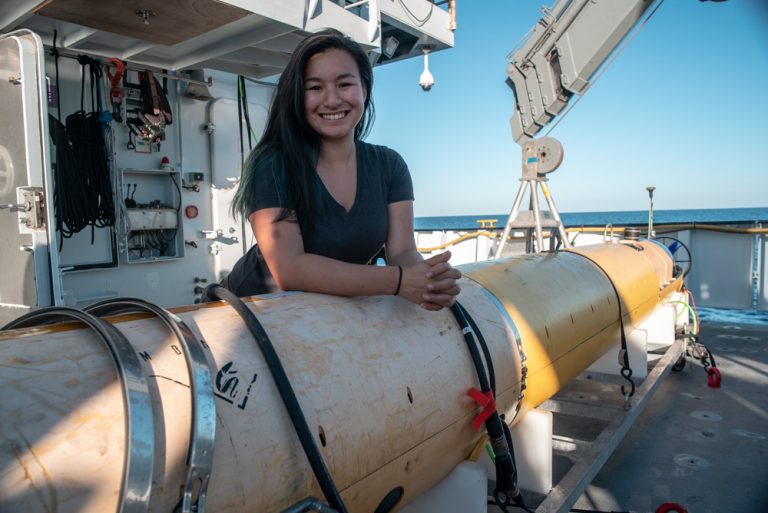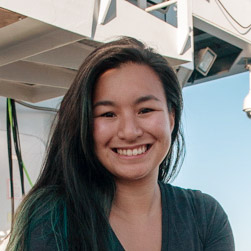Para una versión Español del este blog, por favor haga clic aquí.
My name is Emery Nolasco and I am an AUV (Autonomous Underwater Vehicle) Operations Engineer at the Monterey Bay Aquarium Research Institute (MBARI). I have been working with MBARI since January 2018 so I am very new to the crew!
The decision to become an autonomous robot engineer who researches the ocean has been my goal since a very young age. In high school and college I worked with a lot of robots that dealt with navigation and data collecting – I found that I really loved the process of developing the robots and integrating sensors. On the fabrication end, I loved the challenge and need for creativity when designing for difficult and hazardous environments. I was a huge aquarium hobbyist as a teenager, and after college I took up volunteering as a citizen scientist diver-collecting data on the California coasts. As my experience developed, I started to see how creating tools with technology can help accelerate and give more opportunity to scientists to advance our knowledge of the Oceans.

Treasure Hunting
Going on expeditions and working with new people from different places and cultures is always a fresh perspective change. In living and working on the same ship for a couple weeks, you really get to know the people that are on it. With each person I have come across, I find it inspiring to bring into perspective that I and these people are part of this global team working towards the same goal of understanding the world we live in.
Every time we launch and recover a vehicle, it always feels like a spaceship launch. Except we do this almost weekly and on expeditions, daily. Sitting in the control room, dimly lit by the screens of the ROV (Remotely Operated Vehicle), the deep ocean really does look like space – with its marine snow stars and alien-like creatures floating around. With our 18-foot yellow torpedo shaped AUVs, it is really impressive that we are at the point where we can launch and communicate commands and location with an untethered vehicle acoustically, have it run for 20+ hours going down to depths of 4000 meters, and come back. While ROVs usually run on a schedule, AUV Operations can be 24-hour Operations, which has given me the opportunity to launch and recover in so many different weather and time conditions. It is very humbling (and a thrill) to realize that we are in the middle of the ocean doing what we do!
Each dive is a dive for treasure, with the treasure being a trove of data that gives us more insight to how the Earth is moving beneath us, and how biology lives, reacting to these changes. Each expert that can interpret the data translates a different part of the story. I find it really rewarding to see that data even half processed, and with more experiences that I’m gaining with this job the more I realize the magnitude of importance and what capabilities this data gives us!

Multitask
As an AUV Operations Engineer, you have to wear a lot of hats, including development, debugging, and operation of the vehicle. We have to understand the vehicle as a whole, on top of ensuring that we have a setup that will work to operate it. This includes attaching antennas, running communication cables, creating a plan, and executing the launch and deployment of the vehicle on the ships. Since we are dealing with coordination of large, heavy, expensive vehicles in the middle of the ocean, we want to make sure no equipment gets damaged in the process. This means we have to constantly communicate and coordinate with the ship’s crew, ROV team, and scientists to make sure everyone is on the same page, that we are collecting the correct data, that everyone knows their role, and where to be during operation with the AUV.
During operation of a vehicle on a boat, anything can happen and we have to be ready to have a solution – whether it be an issue in programming, electrical, mechanical, fabrication, deck-work, or logistics. We are out on a ship and coming back to shore (which could be a day or more out) is not really an option – so we have to be prepared! We need to have the technical skills in equipment and fabrication in the event that modifications or repairs need to be made. Some examples of the skills we need are (but not limited to): programming, knowledge of materials and how they interact with each other, machining, welding, soldering, reading schematics, debugging circuit boards, understanding power systems, and use of hand tools.
With all this being said, I find that my job will always be challenging, the technology we work on is constantly pushed for more capability and the research and need for knowledge driving it all is growing as we speak with our current expedition! It is a constant learning process, it is a new problem to solve at every corner, and an adventure with every new experience – and that is exactly what I love about it.


